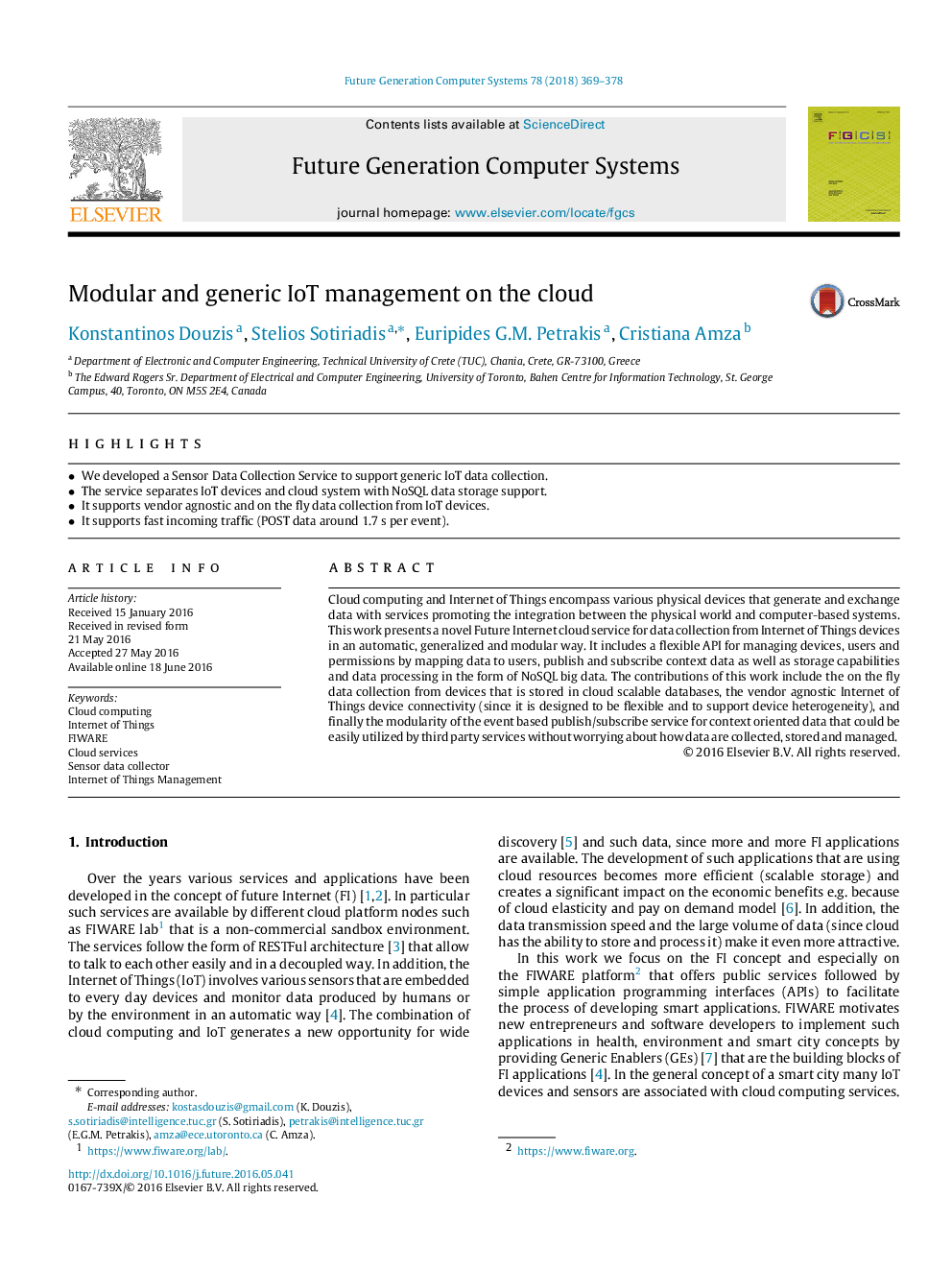| کد مقاله | کد نشریه | سال انتشار | مقاله انگلیسی | نسخه تمام متن |
|---|---|---|---|---|
| 4950283 | 1364283 | 2018 | 10 صفحه PDF | دانلود رایگان |
کلمات کلیدی
.1مقدمه
,2انگیزه
.3کارهای مرتبط
شکل 1. معماری ماژولار رویداد سرویس SE.
شکل 2 معماری مرجع برای جمعآوری دادههای حسگر در سیستمهای IoT.
جدول 1 برنامه رابط برنامه نویسی (API) Event Service SE.
.4معماری مجموعه دادههای سنسور (SDC) خدمات ابری
4.1معماری مرجع
4.2معماری جمعکننده دادههای سنسور (SDC) سرویس ابری
جدول 2 تعاملات کاربران با قابلیت API.
جدول 3 رابط برای مدیریت حسگر.
جدول 4 رابط کاربری برای مدیریت کاربر.
جدول 5 رابط کاربری برای مدیریت اشتراک کاربران.
جدول 6 رابطهای مجوز حسگر / مجوز مدیریت.
جدول 7 رابط برای دادههای سنسورها.
4.3. کاربران orchestration
شکل 3: معماری سرویس جمعآوری داده سنسور.
.5اجرای سرویس ابر جمعآوری اطلاعات سنسور
5.1مدیریت سنسورها
5.2مدیریت کاربران
5.3مدیریت اشتراک
5.4مدیریت مجوز / مجوز
شکل 4. اعلانهای متن در زمان واقعی.
5.5مدیریت اطلاعات حسگرها
5.6 پیادهسازی قابلیت تأیید هویت کاربر
.6تجزیه و تحلیل تجربی
شکل 5. استفاده از middleware احراز هویت برای شناسایی کاربر.
جدول 8 نتایج تجربی برای شبیهسازی حسگرهای Zephyr و Atmo. همه اندازهگیریها برمبنای ثانیه است.
7.نتیجهگیری
- We developed a Sensor Data Collection Service to support generic IoT data collection.
- The service separates IoT devices and cloud system with NoSQL data storage support.
- It supports vendor agnostic and on the fly data collection from IoT devices.
- It supports fast incoming traffic (POST data around 1.7Â s per event).
Cloud computing and Internet of Things encompass various physical devices that generate and exchange data with services promoting the integration between the physical world and computer-based systems. This work presents a novel Future Internet cloud service for data collection from Internet of Things devices in an automatic, generalized and modular way. It includes a flexible API for managing devices, users and permissions by mapping data to users, publish and subscribe context data as well as storage capabilities and data processing in the form of NoSQL big data. The contributions of this work include the on the fly data collection from devices that is stored in cloud scalable databases, the vendor agnostic Internet of Things device connectivity (since it is designed to be flexible and to support device heterogeneity), and finally the modularity of the event based publish/subscribe service for context oriented data that could be easily utilized by third party services without worrying about how data are collected, stored and managed.
Journal: Future Generation Computer Systems - Volume 78, Part 1, January 2018, Pages 369-378
